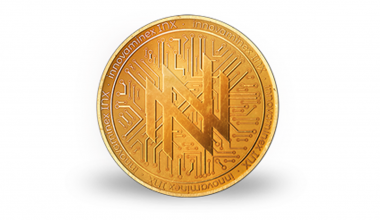This post is also available in:
![]()
![]()
Web 3.0 is the next third generation of the Internet in which websites and applications will be able to process information in an intelligent human-like way through technologies such as machine learning (ML), Big Data, decentralised accounting technology, etc.
Web 3.0 Originally, Tim Berners-Lee, inventor of the World Wide Web, called it the Semantic Web and its aim was to be a more autonomous, intelligent and open Internet.
The definition of Web 3.0 can be expanded as follows: data will be interconnected in a decentralised way, which would be a breakthrough for our current generation of the Internet (Web 2.0), where data is mainly stored in centralised repositories.
In addition, users and machines will be able to interact with the data. But for this to happen, programs must understand the information both conceptually and contextually. With this in mind, the two pillars of Web 3.0 are the semantic web and artificial intelligence (AI).
Web 3.0, Cryptocurrency and Blockchain
Given that Web 3.0 networks will operate through decentralised protocols, the fundamental building blocks of blockchain technology and cryptocurrencies, we can expect to see a strong convergence and symbiotic relationship between these three technologies and other fields.
They will be interoperable, seamlessly integrated, automated through smart contracts and used to power anything from micro transactions in Africa, censorship-resistant P2P data file storage and sharing with apps like Filecoin, to completely changing the conduct and operation of every business. The current plethora of DeFi protocols are just the tip of the iceberg.
There are a few details to keep in mind when analysing Web 3.0 technology. First, the concept is not new.
Evolution of Web 3.0 Technologies
Web 3.0 will be born out of a natural evolution of web tools from previous generations combined with cutting-edge technologies such as AI and blockchain, as well as the interconnection between users and the increased use of the Internet. Apparently, Internet 3.0 is an update of its precursors: web 1.0 and 2.0.
Web 1.0 (1989-2005)
Web 1.0, also called static Web, was the first and most reliable Internet in the 1990s although it only offered access to limited information with little or no user interaction. In the past, creating user pages or even commenting on articles was not a thing.
Web 1.0 had no algorithms to sift through Internet pages, which made it very difficult for users to find relevant information. In short, it was like a one-way highway with a narrow path where content creation was done by a select few and information came mainly from directories.
Web 2.0 (2005-present)
The social web, or Web 2.0, made the Internet much more interactive thanks to advances in web technologies such as Javascript, HTML5, CSS3, etc., which allowed start-ups to create interactive web platforms such as YouTube, Facebook, Wikipedia and many more.
This paved the way for both social networking and user-generated content production to flourish, as data can now be distributed and shared across multiple platforms and applications.
The toolkit in this Internet era was initiated by a number of web innovators such as the aforementioned Jeffrey Zeldman.
Web 3.0 (still to come)
Web 3.0 is the next stage of web evolution that would make the internet smarter or process information with near-human intelligence through the power of AI systems that could run intelligent programmes to help users.
Tim Berners-Lee had said that the Semantic Web is meant to interact “automatically” with home systems, people and devices. As such, content creation and decision-making processes will involve both humans and machines. This would enable the intelligent creation and distribution of highly personalised content directly to each Internet consumer.
Key characteristics of Web 3.0
To truly understand the next stage of the Internet, we must take a look at the four key characteristics of Web 3.0:
- Ubiquity: Being everywhere at the same time.
- Semantic Web: The application of semantics on the Web would allow machines to decode meaning and emotions by analysing data.
- Artificial intelligence: The internet needs AI to learn to distinguish the genuine from the fake in order to provide reliable data.
- 3D graphics: 3D graphics bring a new level of immersion.

